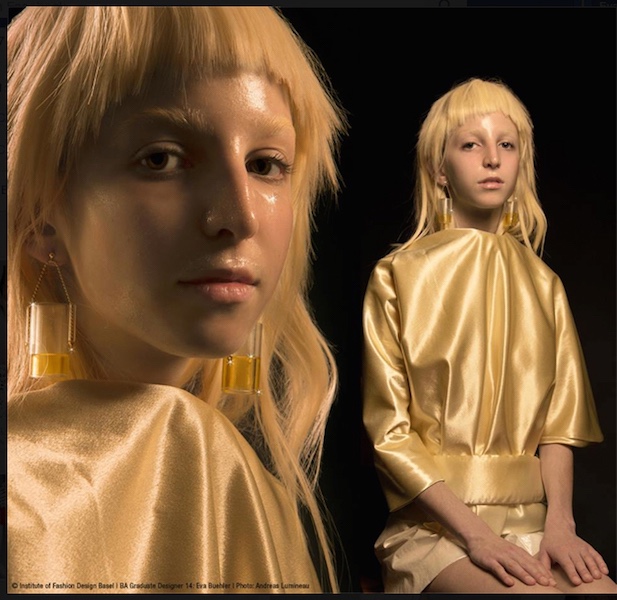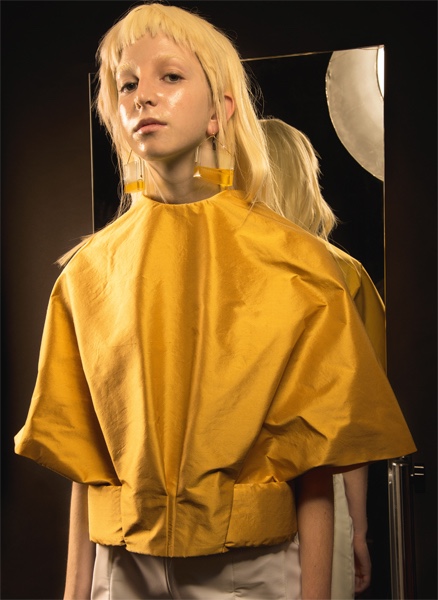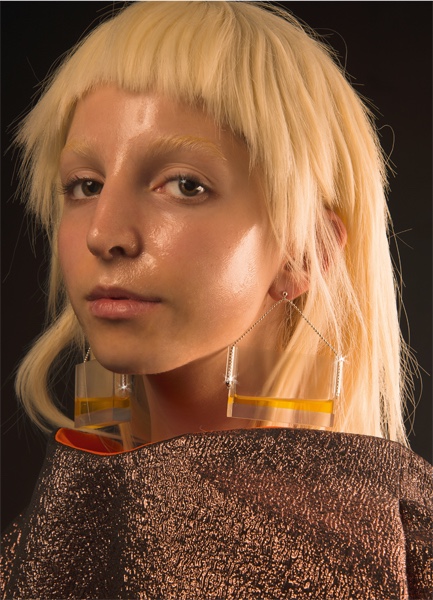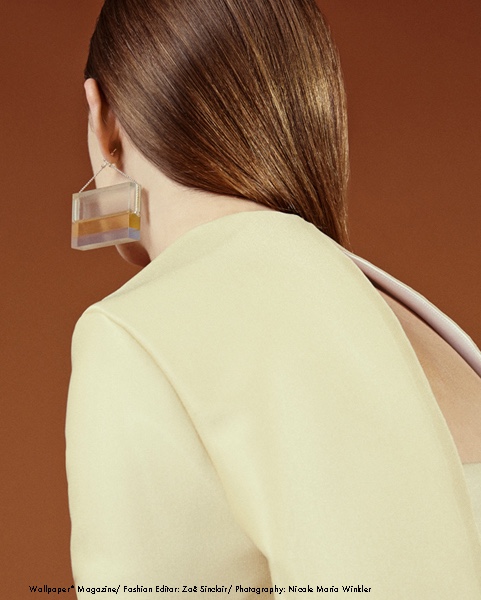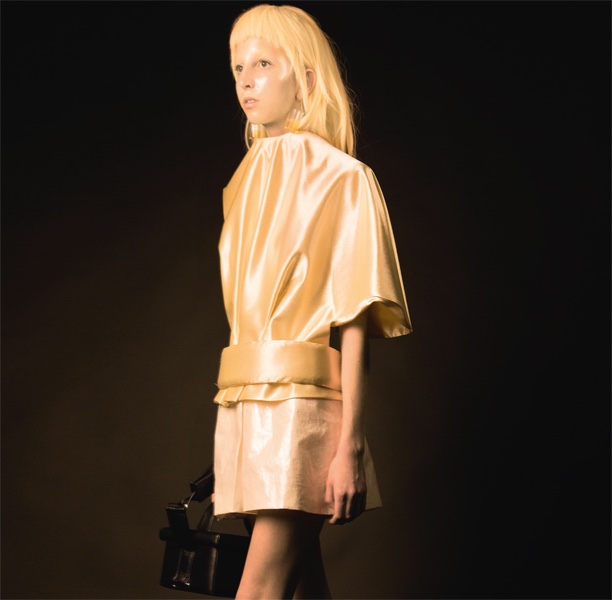Eva Buehler graduated with a Bachelor of the Arts in fashion design in 2014 from the Academy of Art and Design in Basel – Doing Fashion. Before that she studied ‘Style and Design’ in Zurich at ZHDk. She was one of the students picked from Doing Fashion Basel to showcase her work at the CH Talents: Visionaries exhibition. The exhibition took place during LFW and was part of the International Fashion Showcase 2015.
Eva, what is it about life and death that inspired this collection?
I might have been in the mood for a little pathos with the end of studies approaching. To put it in Edmond Haraucourt’s language, “Partir, c’est mourir un peu.” The Dutch vanitas imagery of the 16th and 17th century deal with this topic of finite nature of all earthly goods in a way that is celebratory – I liked this approach. I wanted to embrace with this collection everything that I liked in fashion, a last fête of everything that is luxurious and fun. Also, I watched Woody Allen’s film Interiors and was intrigued by the precise use of colour in the decor of the setting and clothing of the actors. The colour beige in all its shades is used to underline grief and death – a striking red, by contrast, is found in the clothing of the one persona that doesn’t fit in the intellectual circle of the family pictured, but ultimately turns out to be the only person that is capable of a joyous life. This colour scheme as well as the tension of joy vs. raison is also found in the collection.
You mention the temporariness of human life and its link to non-essential fashion. Where do you see this link and how is it reflected in your work?
Given the fact that everything ends at some point, raison and sense seem irrelevant. What counts is amusement and embracing what brings joy – spending money on luxury products for example; things you don’t need, but are great. I wanted to embrace this idea in my collection.
The Baroque Vanitas are quite sombre and full of symbolism surrounding death. Often there’s rotten fruit symbolising decay, or bubbles depicting the brevity of life and suddenness of death. How did you translate this into your collection?
I was intrigued by the vanitas imagery because it manages to show the two extremes of beauty and decay by displaying arrangements of pretty nippes. They display the transient nature of all earthly goods and consequentially celebrate the momentum – youth and beauty. To me, this is the perfect allegory for fashion: It has no use and is always momentary. Its content lies in its appeal, beauty. And that’s its strongest asset. I wanted to embrace and celebrate what is luxurious and useless in fashion. The thought of ‘decor’ and decorating is very appealing to me because of its lack of purpose. The quintessence of ‘useless’ to me was staging a fête of accessories; earrings reminiscent of the glass objects of the Memento Mori imagery; perfume flacons, filled with a blend of essential beauty oils, small beauty cases as bags. Moreover, I wanted to celebrate the youthful female body by showing an elongated neck and emphasising the bust, round shoulders and belted tops that display the back. Translating the juxtaposition of youth and decay in material resulted in shiny, lucid and bright surfaces and fabrics such as silks, satin and colours like bright whites and golden yellows in contrast to ‘sad’ colours such as dim beiges. The models’ dead dry, bleached out and uniform hair acts as a memento of decay.
You’ve said you want the collection to be about the here and now – how is this message conveyed to the viewer?
The ‘here and now’ is expressed by negating any form of preoccupation, worry, raison and constraint. Nonsense means fun and joy. And I hope this comes across in the collection.
Doing Fashion’s central focus is the development of a personal approach. How have you been developing yours?
Fashion is always personal because it originates out of somebody’s perception of life and the surrounding atmosphere. The more on-point and specific this vision is, the better and more precise the collection. Developing this personal approach is thus only possible by being as definitive as possible as a designer. And as a person, nota bene.
Basel is not known as a major fashion capital – what traits or attributes does it have to offer that differ from London, New York, Paris or Milan?
I never liked Basel as a city; it always felt somewhat off’ to me. I don’t think that it offers anything more than other cities. This doesn’t have to be a disadvantage when it comes to studying fashion though. On the contrary, if not, it encourages you to educate yourself even more towards elaborating a precise intuition. And in the end, to me, it’s more about the school you attend than the city you live in.
How has living in Basel shaped your growth as a person and designer in the fast-paced fashion industry?
In the end, studying is more about finding the way of working that suits you best. Preferably surrounded by great facilities and support – both of those are exceptional at the Institute in Basel.
Why did you choose to study fashion?
I was always obsessed with everything that felt new. Growing up I always went to the kiosk and bought Glamour Magazine from Germany which was addressed to a very specific kind of working women in an office environment – a world that absolutely fascinated me as a twelve-year-old. This fascination towards the ‘new’ never changed, it just broadened as I grew older and shifted towards wanting to create my own aesthetic environment for a specific outlook that felt new and relevant to me. Doing Fashion allows you to do just that.
Doing Fashion encourages designers to break away from conventional images of beauty. How would you define Beauty?
As mentioned, the Institute encourages the students to find very personal approaches towards all aspects of designing, also in defining beauty– believing in the idea that when personal approach meets relevance this results in a successful design. I notice things and people as beautiful when they seem effortless, always with a pinch of irritation. Irritation is always good.
Still or sparkling?
Sparkling water, always.
Interview: Misha Skelly
